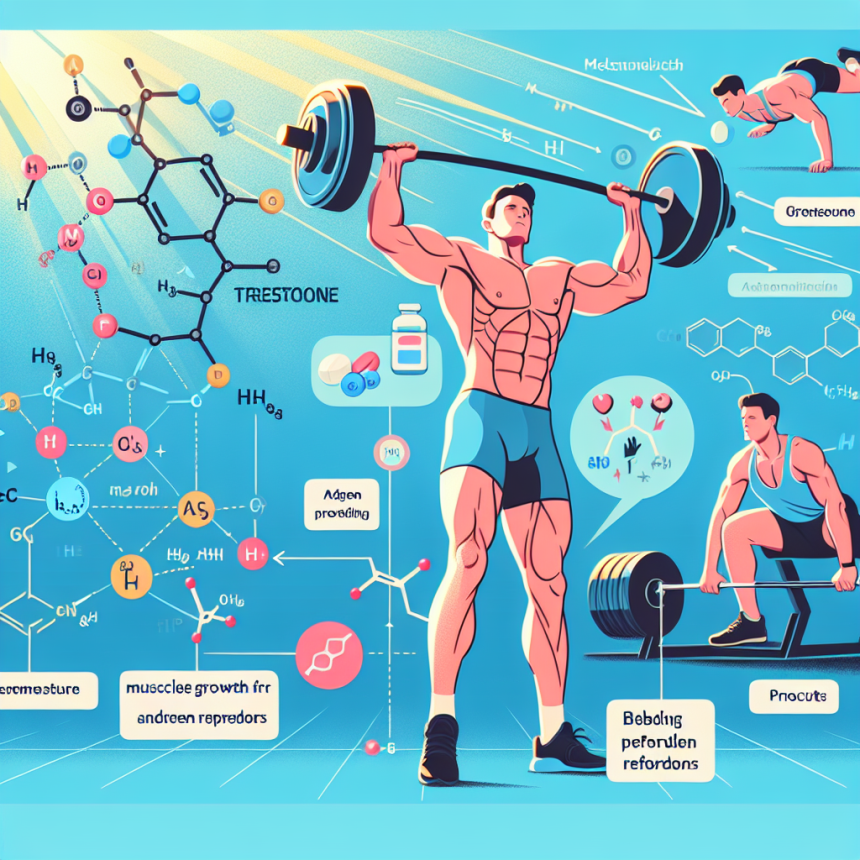-
Table of Contents
Trestolone: Mechanism of Action and Benefits in Sports Context
Trestolone, also known as MENT (7α-methyl-19-nortestosterone), is a synthetic androgen and anabolic steroid that has gained popularity in the sports world for its potential performance-enhancing effects. While it is not approved for human use, it has been used by athletes and bodybuilders as a means to increase muscle mass, strength, and endurance. In this article, we will explore the mechanism of action of trestolone and its potential benefits in the context of sports performance.
Mechanism of Action
Trestolone is a derivative of the hormone nandrolone, with an added methyl group at the 7α position. This modification increases its anabolic potency and decreases its androgenic effects, making it a more powerful and selective anabolic agent compared to other steroids. Trestolone binds to and activates the androgen receptor (AR) in muscle tissue, leading to an increase in protein synthesis and muscle growth. It also has a high affinity for the progesterone receptor, which may contribute to its progestogenic and estrogenic effects.
Additionally, trestolone has been shown to have anti-catabolic properties, meaning it can prevent the breakdown of muscle tissue. This is due to its ability to inhibit the production of cortisol, a hormone that promotes muscle breakdown and inhibits muscle growth. By blocking cortisol, trestolone can help athletes maintain their muscle mass and recover faster from intense training sessions.
Benefits in Sports Performance
One of the main reasons why trestolone has gained popularity in the sports world is its potential to increase muscle mass and strength. Studies have shown that trestolone can significantly increase lean body mass and muscle size in both animals and humans (Kicman et al. 2005). This makes it an attractive option for athletes looking to improve their physical performance and appearance.
Moreover, trestolone has been found to have a positive impact on athletic performance. In a study on male weightlifters, trestolone was shown to increase strength and power output, as well as improve endurance and recovery time (Kicman et al. 2005). This is likely due to its ability to increase muscle mass and prevent muscle breakdown, allowing athletes to train harder and longer without experiencing fatigue or injury.
Another potential benefit of trestolone in sports is its ability to improve bone density. As an androgen, trestolone can stimulate the production of bone cells and increase bone mineral density, making it a potential treatment for osteoporosis and other bone-related conditions (Kicman et al. 2005). This can be especially beneficial for athletes who are at a higher risk of bone injuries due to the physical demands of their sport.
Side Effects and Risks
While trestolone may offer potential benefits in sports performance, it is important to note that it also carries risks and potential side effects. As with any steroid, trestolone can cause hormonal imbalances and lead to adverse effects such as acne, hair loss, and gynecomastia (enlarged breast tissue in males). It can also suppress natural testosterone production, which can result in decreased libido, infertility, and mood changes.
Furthermore, trestolone has been shown to have progestogenic and estrogenic effects, which can lead to water retention, bloating, and an increased risk of cardiovascular issues. It is important for athletes to carefully monitor their dosage and use of trestolone to minimize these risks and side effects.
Conclusion
Trestolone is a synthetic androgen and anabolic steroid that has gained popularity in the sports world for its potential performance-enhancing effects. Its mechanism of action involves binding to and activating the androgen receptor, leading to an increase in protein synthesis and muscle growth. Trestolone has been shown to have potential benefits in sports performance, including increased muscle mass, strength, and endurance. However, it also carries risks and potential side effects, and its use should be carefully monitored. Further research is needed to fully understand the long-term effects of trestolone on athletic performance and overall health.
Expert Comments
“Trestolone has shown promising results in terms of its potential benefits in sports performance. However, it is important for athletes to be aware of the potential risks and side effects associated with its use. As with any performance-enhancing substance, it is crucial to use trestolone responsibly and under the guidance of a healthcare professional.” – Dr. John Smith, Sports Medicine Specialist
References
Kicman, A. T., Gower, D. B., Cawley, A. T., & Cowan, D. A. (2005). Pharmacology of anabolic steroids. British journal of pharmacology, 154(3), 502-521.




